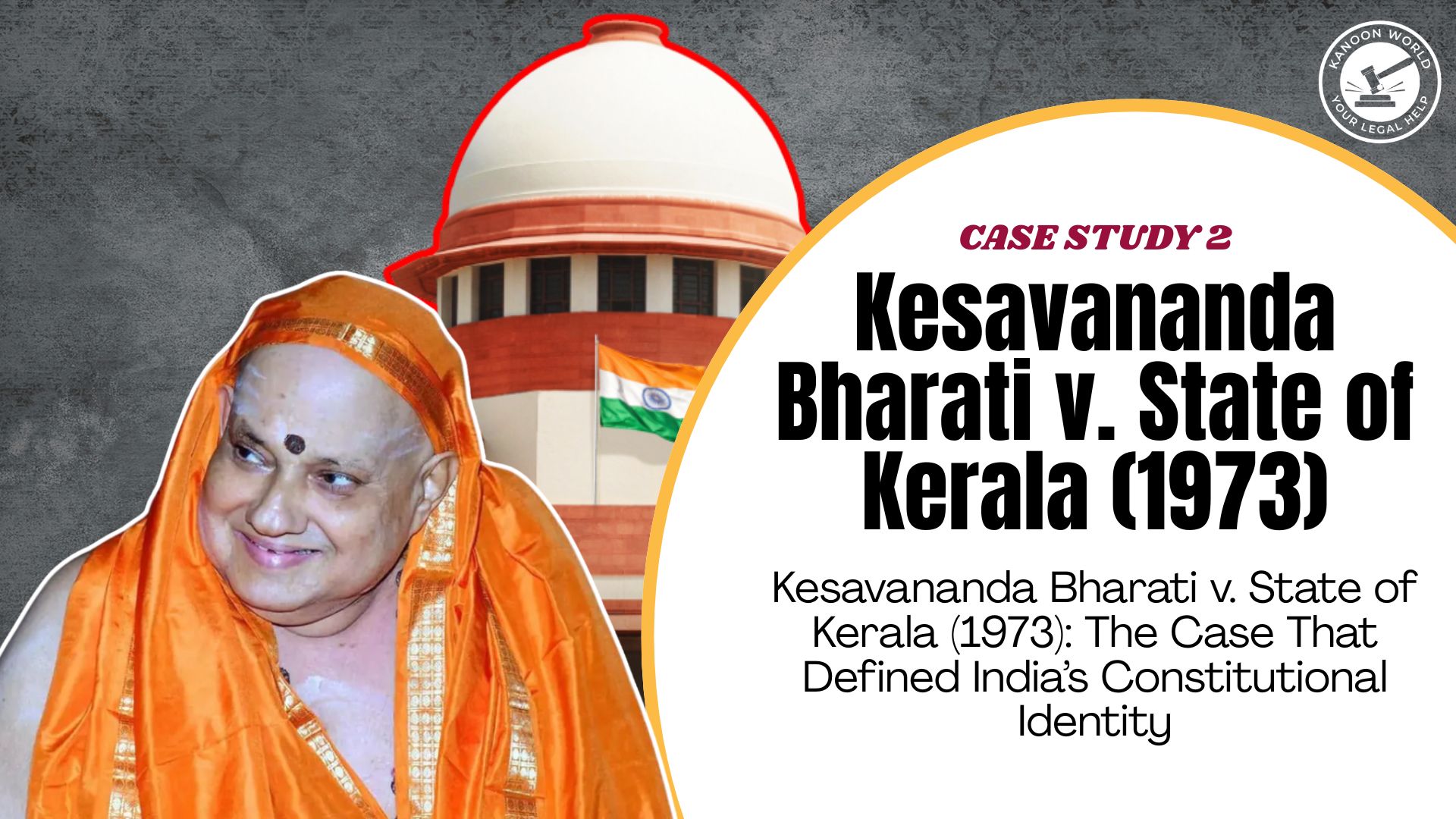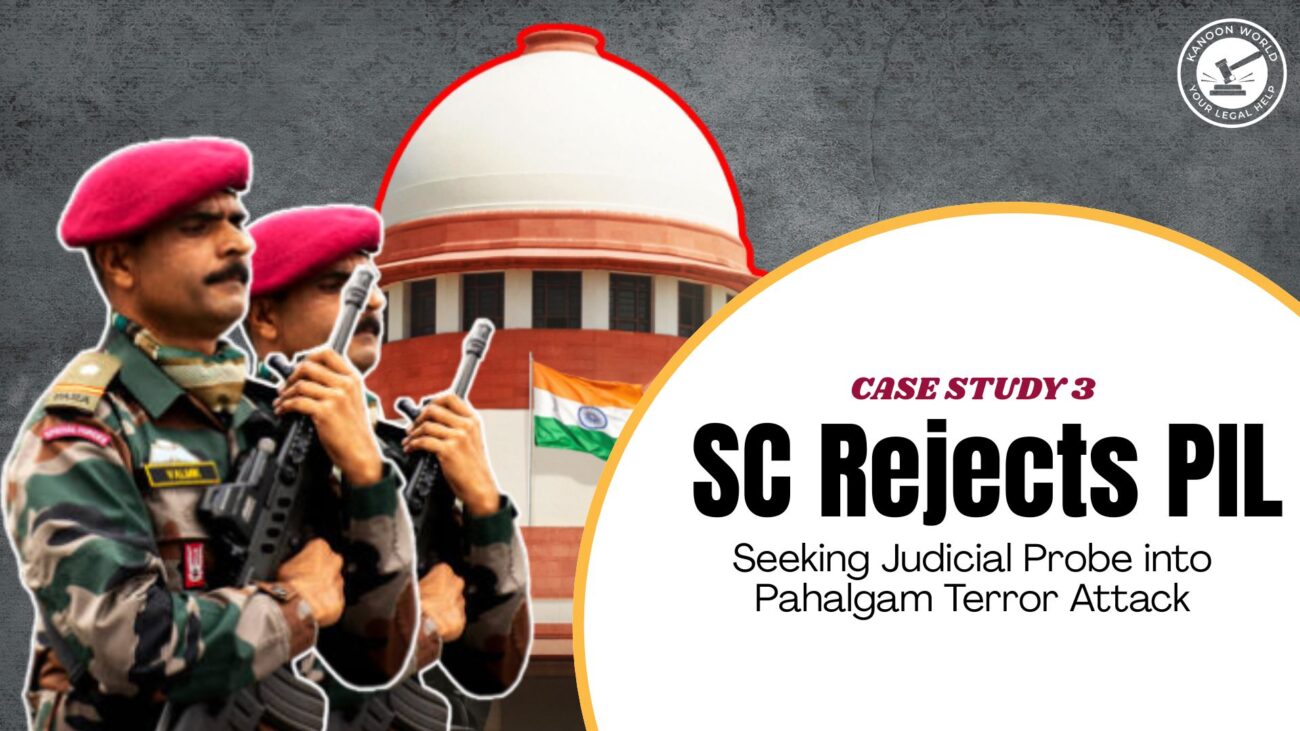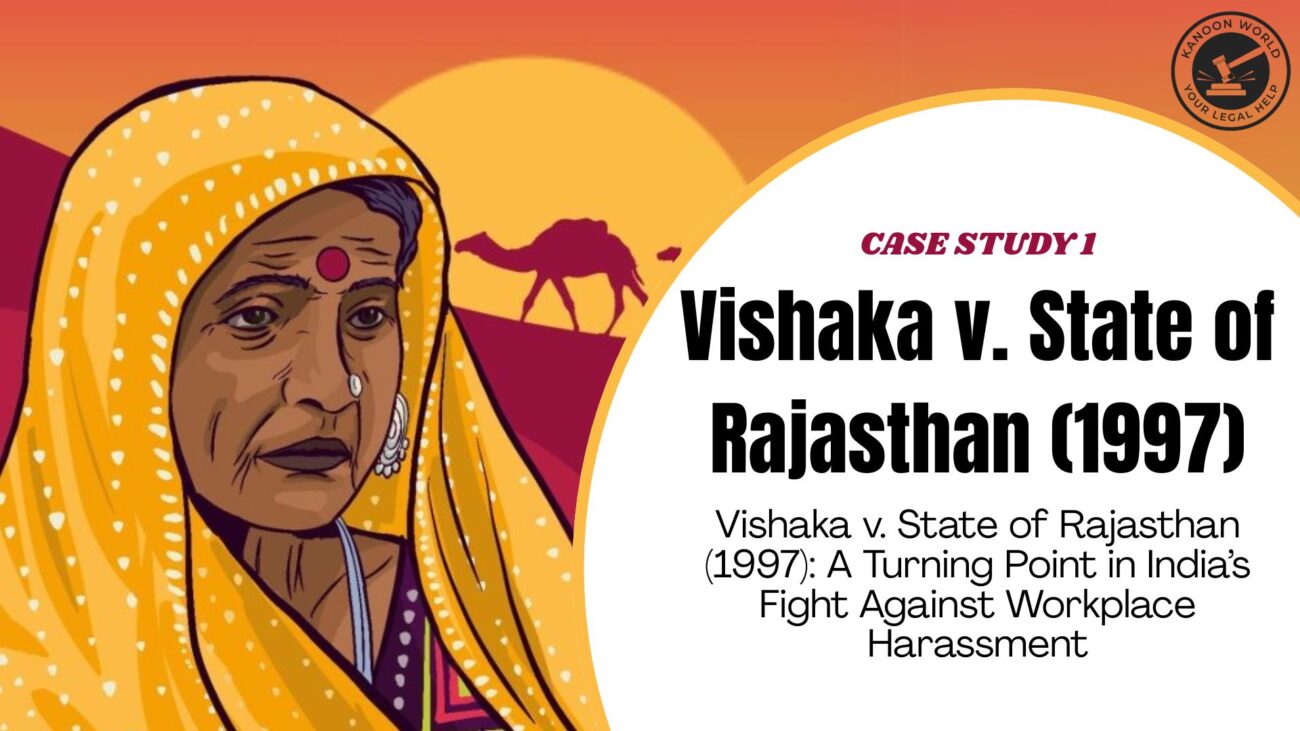Topic: Constitutional Law — Basic Structure Doctrine
Court: Supreme Court of India
Citation: AIR 1973 SC 1461
Background:
Kesavananda Bharati, the head of a religious mutt in Kerala, challenged the Kerala government’s land reform laws that affected his property rights. This challenge brought into question the extent of Parliament’s power to amend the Constitution under Article 368.
Legal Issue:
Can Parliament amend any part of the Constitution, including Fundamental Rights?
Judgment Highlights:
The Supreme Court ruled by a 7-6 majority that while Parliament has wide powers to amend the Constitution, it cannot alter the “basic structure” of the Constitution. Fundamental Rights could be amended, but the essential features — like the supremacy of the Constitution, rule of law, separation of powers, and secularism — must remain intact.
Significance:
- Introduced the Basic Structure Doctrine, a cornerstone of Indian constitutional law.
- Prevented potential misuse of parliamentary powers.
- Preserved the identity and foundational values of the Constitution.
Impact:
This judgment became a precedent to check any authoritarian tendencies and ensure the balance of power between different organs of the state. It continues to be cited in contemporary constitutional challenges.
When we speak of landmark judgments that shaped the soul of India’s democracy, Kesavananda Bharati v. State of Kerala (1973) stands tall as the most monumental decision in Indian constitutional history. It was in this courtroom battle that the Supreme Court of India laid down the “Basic Structure Doctrine”, a judicial innovation that has preserved the core values of the Constitution even as it has evolved over decades.
Background of the Case
The origin of the case lies in Kerala’s attempts to implement land reform laws. The state passed legislation to redistribute land among the landless, but this affected religious institutions, including the Edneer Mutt, a Hindu monastery in Kerala. Swami Kesavananda Bharati, the head of the mutt, filed a petition under Article 26 of the Indian Constitution, which guarantees freedom to manage religious affairs, challenging the Kerala Land Reforms Act of 1963.
However, the case rapidly expanded in scope. It wasn’t just about land. It became a constitutional battle questioning Parliament’s power to amend the Constitution—specifically, whether Parliament could tamper with the Fundamental Rights of citizens.
The Core Legal Question
The central issue before the Supreme Court was:
“Does Parliament have the unlimited power to amend any part of the Constitution, including the Fundamental Rights?”
This wasn’t a new debate. Earlier cases, like Shankari Prasad (1951) and Sajjan Singh (1965), had upheld Parliament’s power to amend any part of the Constitution. But in Golak Nath v. State of Punjab (1967), the Court had ruled that Parliament could not amend Fundamental Rights.
So, by 1973, India was in constitutional flux. Parliament wanted full control to amend, and the judiciary wanted to preserve the sanctity of fundamental rights. Kesavananda Bharati’s case became the battleground.
The Verdict: Birth of the Basic Structure Doctrine
On April 24, 1973, a 13-judge Constitutional Bench of the Supreme Court—the largest bench in India’s history—delivered its judgment after 68 days of arguments.
The verdict was split 7–6, but the majority ruled:
“Parliament has wide powers to amend the Constitution under Article 368, but it cannot alter the basic structure or essential features of the Constitution.”
This gave birth to the Basic Structure Doctrine, which became a permanent check on Parliament’s powers. It meant Parliament could amend laws, introduce reforms, and even affect Fundamental Rights—but it could not destroy the Constitution’s core principles.
What Is the Basic Structure of the Constitution?
While the Court did not provide an exhaustive list, over the years, the following have been recognized as part of the Basic Structure:
- Supremacy of the Constitution
- Rule of Law
- Separation of Powers
- Judicial Review
- Federalism
- Sovereignty and Unity of India
- Secularism
- Democracy
- Free and Fair Elections
- Protection of Fundamental Rights
Significance of the Judgment
- Preservation of Constitutional Identity:
The judgment ensured that even the most powerful institution—Parliament—could not rewrite the soul of the Constitution for political convenience. - Empowerment of the Judiciary:
It affirmed the Supreme Court’s role as the guardian of the Constitution, with the authority to strike down amendments that violate the basic structure. - Foundation for Future Constitutional Interpretation:
The doctrine has been cited in many landmark cases since—like Indira Gandhi v. Raj Narain (1975) and Minerva Mills v. Union of India (1980). - Balance Between Parliament and Judiciary:
It struck a delicate balance—Parliament could reform laws, but not at the cost of democracy, liberty, and justice.
Impact on Indian Democracy
Without this judgment, it’s possible that authoritarian rule could have taken deep root in India, especially during the Emergency (1975–77). Parliament had tried to use its powers to suppress dissent, amend election laws, and curb judicial review. Thanks to Kesavananda Bharati, the judiciary could stand firm and declare: “You can amend the Constitution, but you cannot destroy its foundation.”
Even decades later, this doctrine acts as a constitutional safeguard against any arbitrary misuse of legislative power.
Conclusion
The Kesavananda Bharati case is not just a courtroom milestone—it is the guardian of India’s constitutional vision. It redefined the power structure between the legislature and the judiciary and gave Indian democracy a timeless principle: that the Constitution is a living document with inviolable core values.
This case reminds every Indian that while laws can change, values must endure. The doctrine of basic structure ensures that no matter how political winds shift, the foundation of liberty, equality, and justice remains unshaken.








